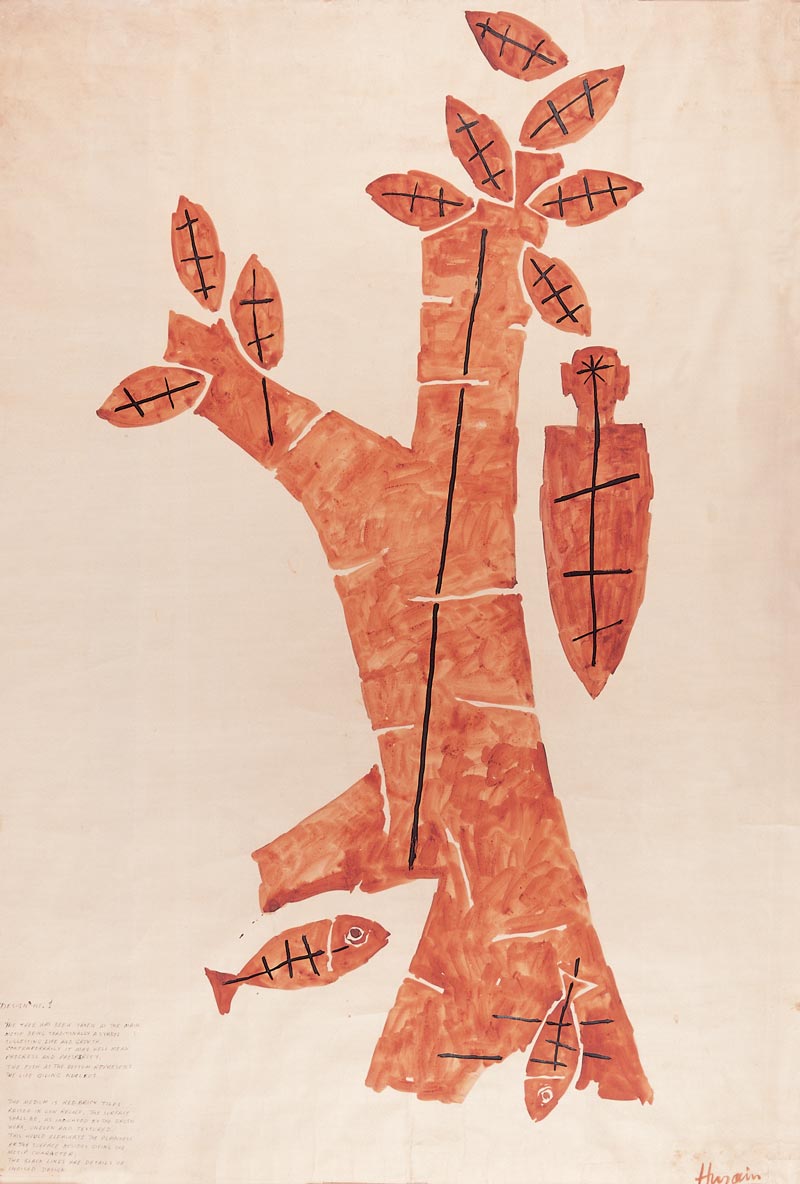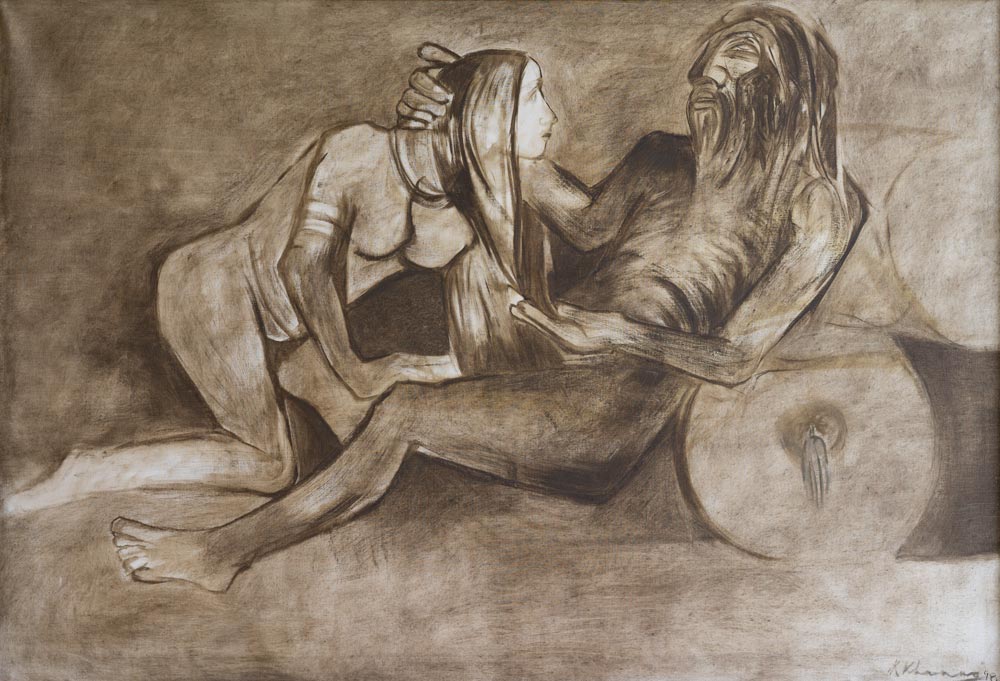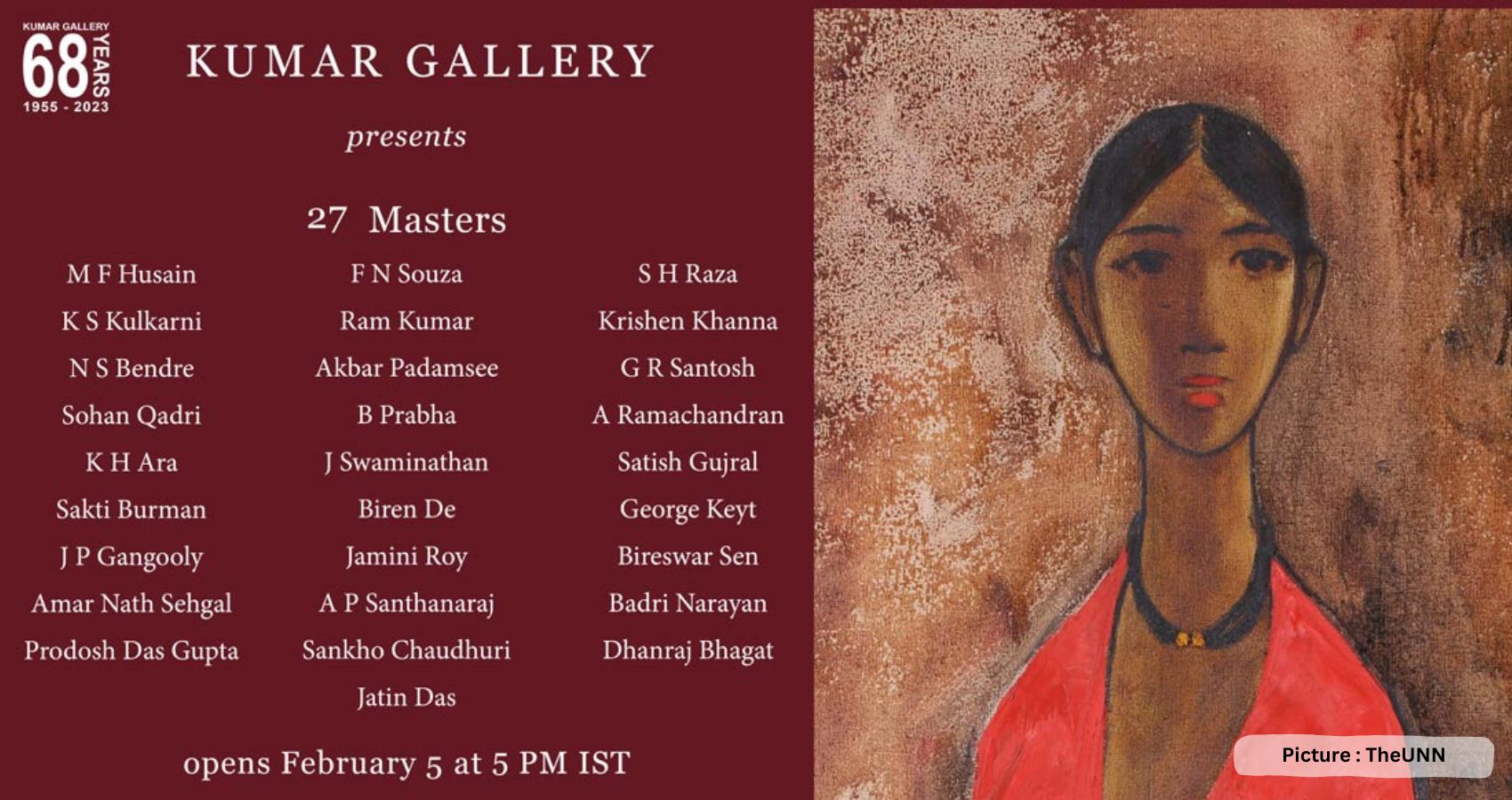Kumar Gallery is pleased to present 27 MASTERS, a group show of master artists spanning from the Bengal school, J P Gangooly, Jamini Roy, Bireswar Sen; to Progressives M F Husain, F N Souza, S H Raza, Krishen Khanna, K H Ara, Ram Kumar, Akbar Padamsee; to tantric abstractionists G R Santosh, Biren De, Sohan Qadri; to important modernists K S Kulkarni, N S Bendre, A Ramachandran, J Swaminathan, B Prabha, Satish Gujral, Sakti Burman, George Keyt, A P Santhanaraj, Badri Narayan, Jatin Das; to eminent sculptors Amar Nath Sehgal, Prodosh Das Gupta, Sankho Chaudhuri, and Dhanraj Bhagat.

Works in the exhibition span themes relevant to 2023. Ramachandran’s Visions of War, with its reflections on propaganda, ideology, religion, history, and the specter of nuclear war has never since World War II been more relevant on account of the Ukraine War. The exhibition invites viewers to further reflect upon themes of the vitality of life as expressed through sexuality in art, the historical socioeconomic fabric of India, and the integration of philosophy into modern life.
Exhibition opens online on February 5th 5PM IST. Select works will be on exhibit at Kumar Gallery Hotel Hyatt Regency & Kumar Gallery Sainik Farms (By Appointment)
Mr. Virendra Kumar Jain of Kumar Gallery is the pioneer in promoting contemporary Indian art in our country as well as abroad. Most of the top ranking artists of today owe their beginnings to him. It was due to relentless efforts Kumar made in creating awareness of modern vocabulary of the mode of painting that has made it possible for most of us to find a niche in the history of world art. What our society has gained through such developments is too obvious to mention. – Satish Gujral
This essay pays tribute to a champion and great supporter of Modern Indian Art, Shri Virendra Kumar, founder of Kumar Gallery. With the dizzying ascent and soaring value of the market for Modern Indian Art in recent years, it is all too easy for connoisseurs to defer to price as a proxy for aesthetic value. Yet Modern was once Contemporary, and there was a time when the evolution of style was the result of a hard-won struggle against the prevailing commercial trends. It was precisely at those crossroads in the history of India that Virendra acted as the principal tastemaker and visionary patron for serious, avant-garde artistic expression.

Virendra Kumar was born on 26 January 1933 to an illustrious and philanthropic Jain family. For generations the family had provided patronage to musicians, sculptors, and painters, architects and had commissioned numerous temples. Most notable amongst direct patrilineal ancestors of the family were Raja Harsukh Rai (1740 – 1807) and his great grandfather Deep Chand Sah, who respectively built the Naya Mandir and Lal Mandir in Delhi, and the latter of whom was the treasurer for the Mughal Emperor Shah Jahan. Oral histories of the family trace the lineage back further to influential Jain traders during the Tomara dynasty (8th – 12th centuries), principally located in the area where the Qutb Minar is now located.
In many ways, known and unknown, the shape of what we now understand as Modern Indian Art was shaped by the efforts of Virendra Kumar and his brothers at Kumar Gallery. Their contributions as promoters and tastemakers came precisely at the hour of need for the first generation of contemporary artists in independent India’s.
Virendra’s comprehensive patronage and unwavering belief that Indian artists could compete with their Western contemporaries was the quintessential catalyst that manifested the latent potential of India’s nascent artistic ecosystem. In recognition of the role that Virendra Kumar played, and in appreciation of his sincerity and resolve, M.F. Husain, termed him, ‘The Kahnweiller of Indian Contemporary Art.’ For more details, please visit: https://kumargallery.com/about-us/


